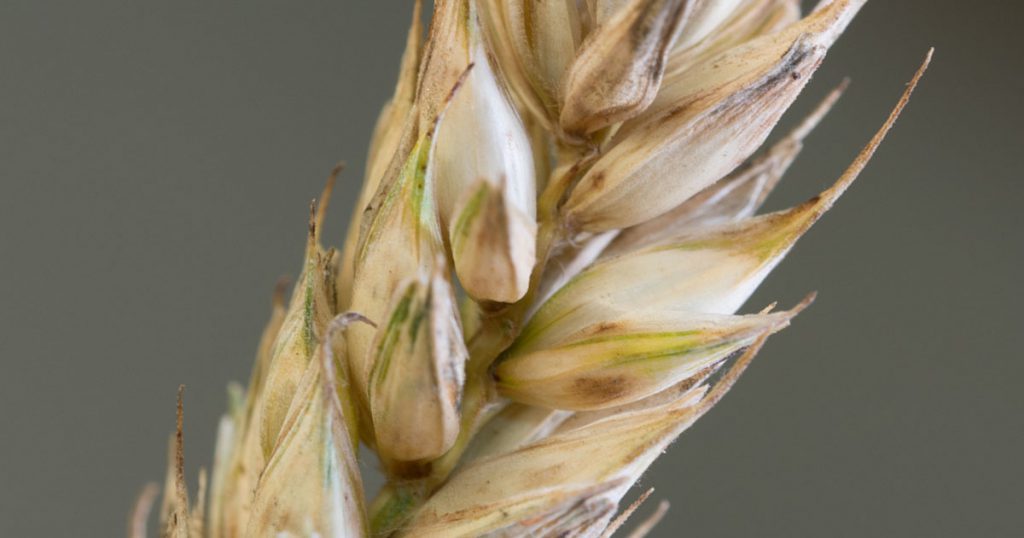Fusarium head blight disease

Last week, we covered the difficult decisions farmers need to make when it comes to using chemicals to care for their crops. This week, let’s look at a disease that needs to be treated with fungicide.
Fusarium head blight is an unfortunately common disease in Ontario wheat, and it typically needs to be controlled with fungicide applications at this time of year. Fusarium head blight is a disease that overwinters in crop residues and seed — that means it can be harboured in the soil after the crop has been harvested, and it can also commonly be spread on the wind. The disease infects grain heads, which affects cereal crop kernel development. Warm, humid weather can worsen the crop infection.
Once the head of the plant is infected, it is easy to spot: the head will appear bleached, and the individual grains will shrink and possibly take on a pinkish, orange tinge. The fusarium damaged kernels produce a vomitoxin called deoxynivalenol, which can make you feel very sick if you eat it. When fusarium damaged kernels are found in a sample of harvested wheat, the amount of damaged kernels is weighted out. If the percent of damaged kernels is above the established safe level, then the wheat will be downgraded from food grade and put into animal feed (animals can handle higher levels of deoxynivalenol). Feed grade wheat sells for significantly less than food grade wheat. It is extremely important to control this common disease, for health as well as for the farmer’s bottom line.
